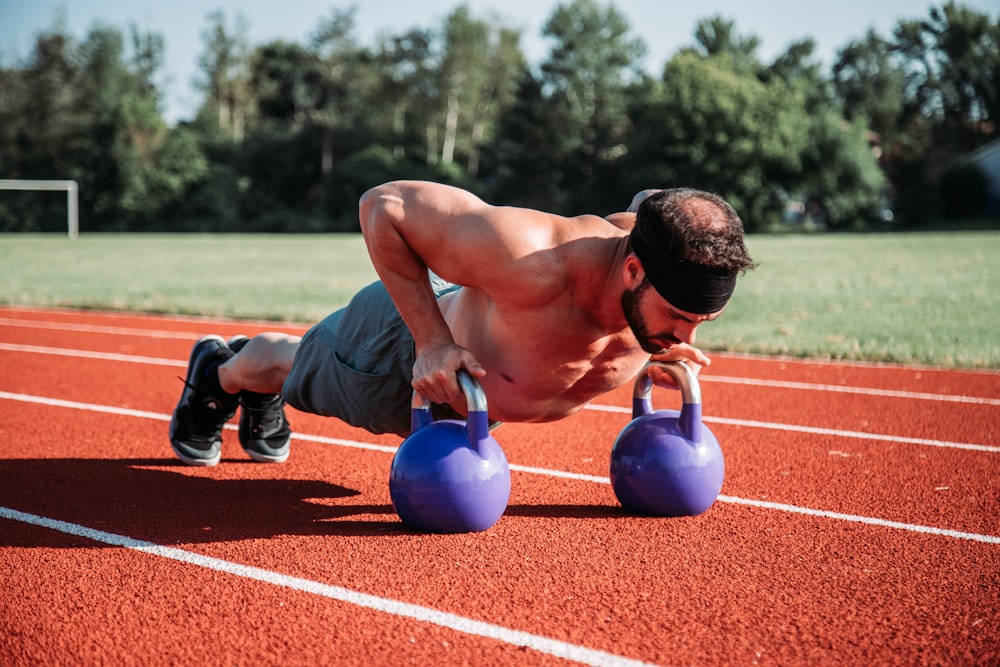
If you’re into fitness and you exercise regularly, it’s important to note the health benefits of foam rolling. Anyone who goes to the gym or exercises regularly should invest in a foam roller, as they’re inexpensive, portable, and a pertinent pre-workout and post-workout tool.
Foam rollers are foam cylinders used to roll out and massage your muscles. The act of foam rolling relieves muscle tension, reduces muscle soreness from working out, boosts recovery, prevents injuries and acts as a deep-tissue massage. These are only some of the benefits of foam rolling.
Essentially, foam rolling is a type of self-massage technique called a self-myofascial release (SMR) technique. It can help relieve inflammation in the body, muscle tightness, soreness, and improve both mobility and range of motion. Many gyms have communal foam rollers for customer use, but it’s also a great idea to buy your own foam roller to keep at home.
It’s healthy to get in the habit of foam rolling both before and after a workout. The foam roller will help get your body ready for a workout, and after a workout, it will release muscle tightness and prevent overbearing soreness. For example, if your workout involves a lot of glute exercises and squats, you can sit on your foam roller with your hands behind you, and roll out your glutes and hamstrings. If you don’t know how to use a foam roller, there are plenty of YouTube tutorials on foam rolling available online.
Foam rolling decreases the chance of injury, boosts recovery, and reduces muscle pain and tightness. Although foam rolling can feel a bit uncomfortable while you’re doing it, this activity ultimately reduces body pains. Below are 5 benefits of foam rolling you’ll notice when you start using this handy tool:
1. Decreases the Chance of Muscle Cramping and Reduces Muscle Soreness
A hard day’s work at the gym will often cause a buildup of lactic acid in your muscles. Foam rolling breaks down lactic acid buildup by acting as a self-massage tool. Since lactic acid buildup can cause cramps, pain and muscle soreness, breaking it down with a foam roller can help reduce your post-workout aches and pains. Foam rolling also releases the myofascial of the muscle. By breaking down fascia buildup, you will reduce post-workout soreness and decrease your recovery time. As an added bonus, you’ll have less chance of painful cramps if you incorporate foam rolling into your post-workout routine.
2. Improved Range of Motion and Better Performance

One of the major health benefits of foam rolling before a workout is that foam rolling releases any tight muscles, allowing them to move better during your gym session. Your range of motion and your flexibility will improve if you incorporate foam rolling into your pre-workout routine. This will of course improve your performance at the gym.
Another reason why foam rolling improves performance at the gym is that it increases blood flow to the body parts you’ll soon be working on, which allows your body to have better mobility during your gym session.
You’ll be able to reach your fitness goals faster if your body can move better and perform more optimally while you’re at the gym.
3. Faster Recovery Time
Did you know that working out your muscles at the gym causes small micro-tears in the muscles? If left untreated, these small tears can cause long-term damage. Foam rolling after a workout helps massage the body parts you just exercised, which speeds up your recovery time and helps speed the recovery of these micro-tears. By foam rolling, you’re helping our muscles return to normal function much more quickly.
Since foam rolling also increases blood flow to the body parts you’ve just worked on, you’ll also speed up your healing time as healthy blood flow is required for muscle healing. Another one of the health benefits of foam rolling is that it releases tight muscles, which helps your body recover faster.
A faster recovery time after a workout means your body is much less sore from your workout, for a much shorter period of time. A speedier recovery means you can work out more often, which is definitely one of the best benefits of foam rolling. Some people are so incredibly sore after a good workout, that they end up having to skip their workout for several days while their body recovers. With the absence of foam rolling and proper stretching after a workout, some people need a lot of time to recover, as their muscle soreness is so bad that it hurts to walk.
4. Injury Prevention
If you want to prevent exercise-related injuries, you should try foam rolling both before and after your workout. Since foam rolling increases blood circulation and blood flow in your body, it can help prevent injuries. Better blood flow allows your body to eliminate waste more efficiently while providing much-needed nutrients to aid in post-workout recovery.
Foam rolling before a workout is also a method of warming up your muscles, and a proper warm-up will help prevent injuries. Foam rolling shouldn’t be your sole warm-up routine, but it should be part of it.
5. Stress Reduction

Relieving muscle tension by foam rolling can help you feel calmer, less stressed, and more relaxed as a result. This is because tight muscles make your body feel tense, and muscle pain gets in the way of your ability to relax.
Releasing muscle tightness by foam rolling could therefore help reduce stress on your body and mind. When your muscles relax, you too will have an easier time relaxing.
What to Do if Foam Rolling is Painful
It’s quite common for foam rolling to be painful, but it shouldn’t be too painful. For example, it will hurt if you are foam rolling an especially tight area or if you find a knot in your muscles while you’re foam rolling. If you can handle the pain and roll through it for about 30 seconds, you could help release that tight area, which could prevent scar tissue from developing.
Rolling tissues you shouldn’t be rolling could cause noticeable pain, which is one of the reasons it’s important to have a fitness professional show you how to properly foam roll.
If you experience any sharp or sudden pain, don’t write this off as normal. This could be a sign that you’ve injured yourself at the gym, and you should see a doctor.
The safest body parts to use a foam roller on are your calves, quads, hamstrings, glutes, traps, and lats.
What’s Your Optimal Exercise Routine?
Have you been spending a lot of time at the gym, experimenting with different exercises and trying to find out which exercises you’re best at performing? Did you know that based on your DNA, you might be more suitable to play certain sports or better suited to certain training routines? If you’re curious what your optimal training type is based on your genetics, order a CircleDNA kit here.





